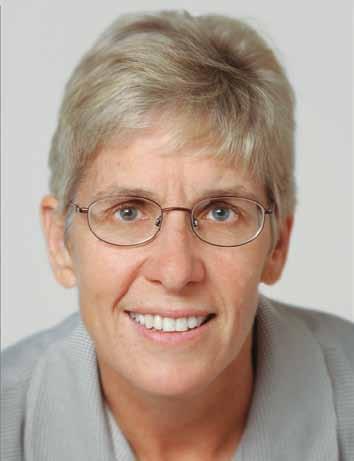
2 minute read
Exit strategy Penny Berents reflects on 40 years of service
PENNY BERENTS reflects on her 40 years of service at the museum anD talks about future challenges with MAXINE KAUTER.
exIt stRAtegy
Dr Penny Berents, now a senior Fellow. Photo by Carl Bento.
When Dr Penny Berents retired as Head of Natural Sciences in December, she simply took her name plate from her office on the third floor of the Collections & Research Building and placed it outside the marine invertebrate laboratory, two doors away. ‘I’m looking forward to continuing to make a contribution as a Senior Fellow’, she said. ‘I’ll be continuing my research into amphipods and working on some of the collections from the Museum’s recent expedition to Timor-Leste.’
BEGINNINGS
When Penny first started work at the Australian Museum in 1971, she was a first-year Zoology student at the University of NSW. ‘I saw an ad on a notice board for a parttime research assistant. I applied for the job and so began a long association with the Australian Museum’, she said. She worked in the Marine Invertebrates section studying cryptofauna, amphipods and echinoderms. Her Master’s degree and PhD were both supervised by (now) Principal Research Scientist Dr Jim Lowry. In 1988 she became the Collection Manager of Marine Invertebrates and then moved to more senior roles as Head of Collections, then Head of Natural Science Collections and finally Head of Natural Sciences.
ACCESS
‘I really enjoyed the hands-on work in collection management – storage, procedures and access to the collection. As a collection manager you are “host” to research scientists from around the world who come to work on the collections and it is very satisfying to see the results of their work.’
Penny likens the Museum collections to a giant ‘library’ of specimens that can be accessed by researchers to ‘answer all kinds of questions’. Such access is vital for many research projects, and the current level of accessibility owes a great deal to her long and focused service. A particular highlight for Penny was implementing the Museum’s digital collection database, EMu. ‘That was one of the most satisfying achievements in my management roles … and overseeing the release of Museum data to a range of web portals like the Atlas of Living Australia.’
PARTING WISDOM
Much of the Museum’s scientific research is largely invisible, yet the collections are regularly plumbed by curious minds and the research is vital for our understanding of the natural world. ‘For my entire career … I have heard the cry that people don’t know that we do science at the Museum. The range of topics being investigated at the Museum never ceases to amaze me. I don’t think it matters that not everybody knows we do science. But there are some groups for whom we should put effort into raising awareness that our science makes a difference.’ Other scientists, government agencies and those who fund research projects top the list for her. ‘We can’t afford to sit back and lament that they don’t understand what we do.’ Her passion is inspiring and we are lucky indeed that she will remain closely involved with Museum research in her retirement.
MAxine KAuter ProJeCt CoorDinator

